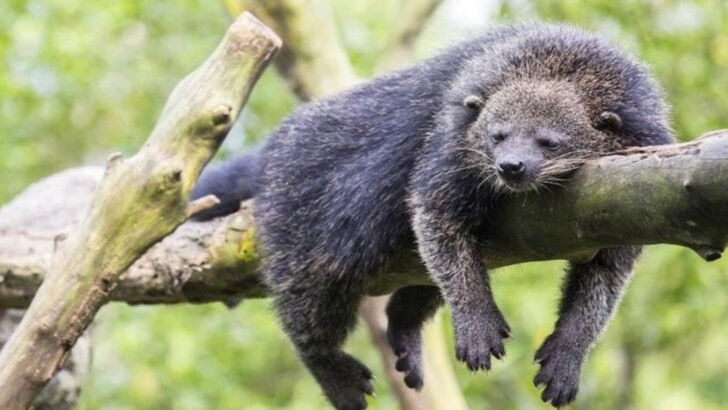The binturong, or “bearcat,” is a creature that seems to come straight from the pages of a mystery novel. With its bear-like body, cat-like tail, and wild behavior, it’s no wonder this elusive animal leaves everyone scratching their heads.
Native to the dense jungles of Southeast Asia, the binturong is as unique as it is endangered. Despite its odd appearance, it’s not related to bears or cats, which only adds to its charm—and its mystique.
But don’t be fooled by its cuddly nickname. The binturong’s life is full of surprising behaviors and adaptations that make it a fascinating species to study. From its powerful scent to its unexpected diet, this creature’s secrets are far from ordinary.
Get ready to discover 12 mind-blowing facts about this incredible animal. You’ll never look at a binturong the same way again!
Binturong’s Unique Scent
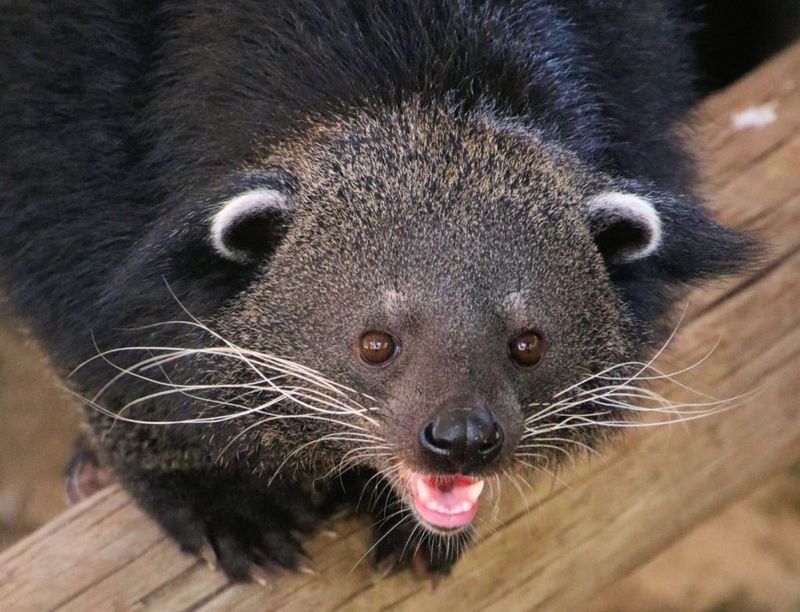
Imagine the aroma of buttered popcorn wafting through the trees. This is how the binturong marks its territory. Its scent glands release a smell reminiscent of this popular snack, creating an olfactory signature in the wild.
The scent is not just a quirky trait; it plays a crucial role in communication. As the binturong moves through its arboreal habitat, it leaves this intriguing scent behind.
This distinct buttered popcorn aroma acts as both a territorial marker and a means of identifying each other in the dense forests of Southeast Asia.
Arboreal Acrobats
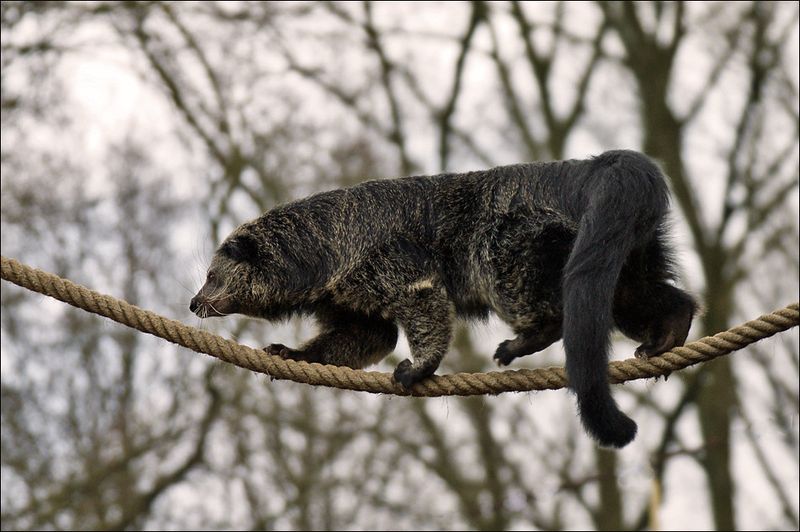
High above the forest floor, the binturong swings gracefully from branch to branch. Its prehensile tail acts as a fifth limb, offering unmatched balance and agility.
This tail isn’t just for show; it plays a critical role in the binturong’s survival. By wrapping its tail around branches, the binturong can free its paws for grabbing food or navigating tricky paths.
Such arboreal prowess allows it to access food sources unreachable by other animals, giving the binturong a unique niche in its ecosystem.
Binturongs Are Omnivores
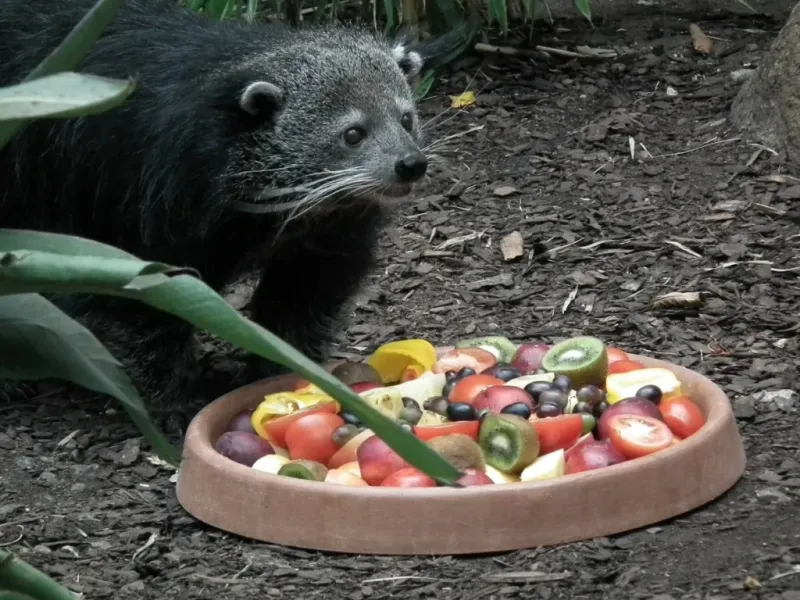
With a diet as diverse as the jungle itself, the binturong is an omnivore. From succulent fruits to small rodents, its menu is extensive. This adaptability in diet is crucial for survival in the ever-changing forest environment.
By consuming a wide array of foods, the binturong maintains a balanced diet, supporting its energy needs and health. Its role as an omnivore also positions it as a vital seed disperser, contributing to forest regeneration.
This dietary flexibility highlights the binturong’s adaptability and importance in its habitat.
Elusive Nocturnal Habits
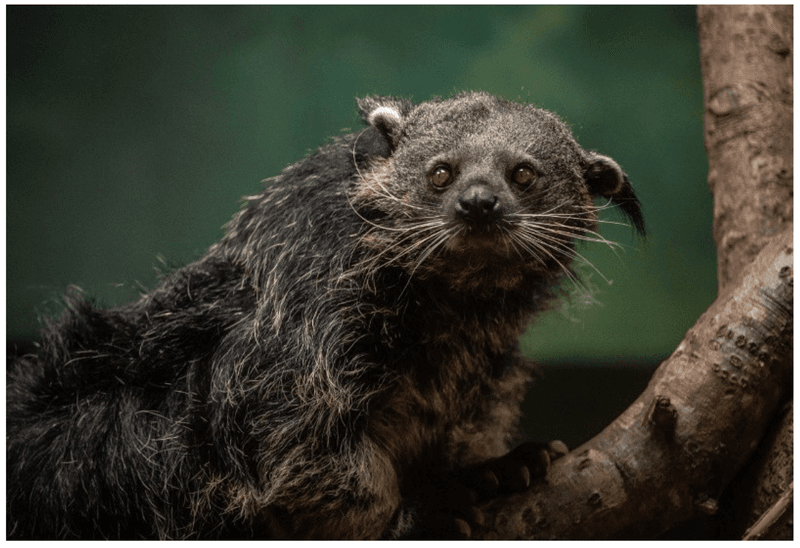
The mystery deepens under the cover of darkness. Binturongs are nocturnal, roaming the forests at night with their keen senses. This nighttime activity reduces competition for food and helps avoid predators.
Equipped with excellent night vision and a heightened sense of smell, the binturong navigates the darkness with ease. These nocturnal habits make them elusive and less likely to be seen by humans.
Their secretive lifestyle adds to the allure and mystery of these intriguing creatures, making them a rare sight even in their natural habitats.
Critically Endangered Status

The plight of the binturong is a silent crisis. Classified as vulnerable, their population is dwindling due to habitat destruction and illegal wildlife trade. Conservationists are racing against time to protect these majestic creatures.
Efforts include habitat restoration, legal protection, and breeding programs. Raising awareness of their endangered status is crucial for garnering support for conservation initiatives.
Each action taken is a step towards ensuring the binturong’s survival. Understanding their critical status is necessary to motivate global efforts to save them from the brink of extinction.
Fuzzy Appearance

A glimpse of the binturong reveals a creature like no other. Its shaggy coat and bushy tail give it a fuzzy appearance, reminiscent of a living plush toy. This thick fur serves a practical purpose, providing insulation and protection from the elements.
The binturong’s expressive face and long, white whiskers add to its endearing look. Despite this cute exterior, the binturong is a formidable survivor in the wild.
The combination of its unique appearance and adaptability makes it a captivating subject of study for wildlife enthusiasts.
Communication Through Sounds
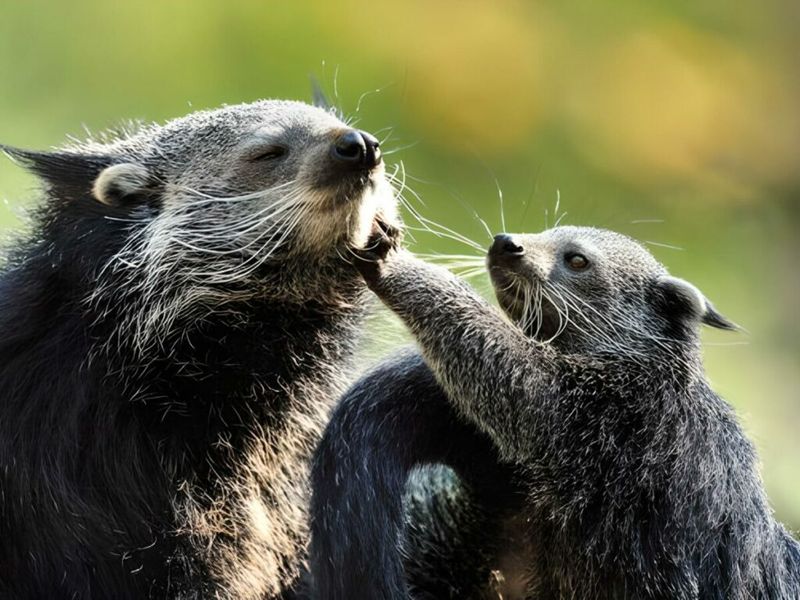
In the dense forests, silence is rare. Binturongs are vocal animals, using a series of sounds to communicate with each other. From low growls to high-pitched chuckles, their vocalizations convey a range of emotions and warnings.
These sounds facilitate interaction, whether signaling danger or maintaining social bonds. The binturong’s ability to communicate vocally is essential for its survival in the wild.
Such audible expressions ensure that they can warn each other of impending threats or call out during mating season, demonstrating a complex social structure.
Long Lifespan in Captivity
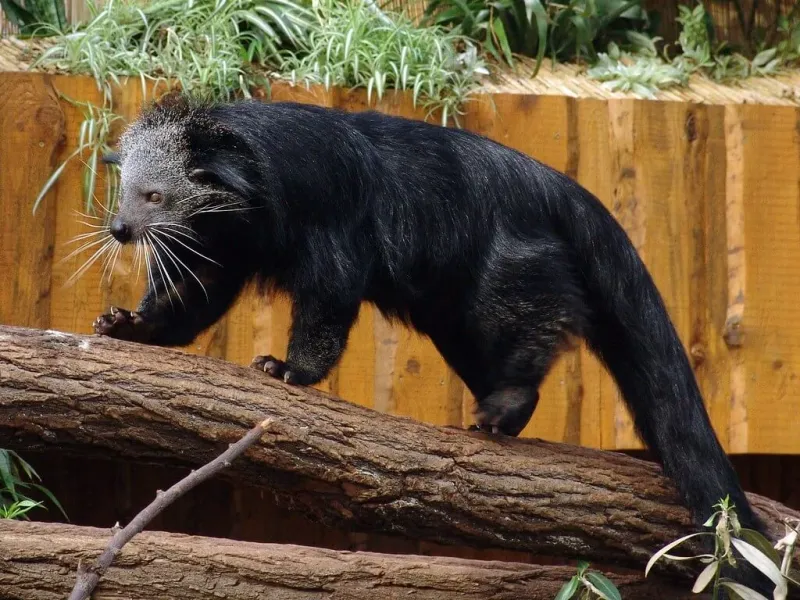
In captivity, binturongs can live remarkably long lives. With proper care, they often surpass the average lifespan of wild counterparts. Zoos and wildlife sanctuaries provide the necessary environment for binturongs to thrive, offering ample food and medical care.
This extended lifespan not only aids in conservation efforts but also provides valuable research opportunities. By studying binturongs in captivity, scientists gain insights into their biology and behavior.
These learnings contribute to the development of conservation strategies aimed at protecting wild populations.
Binturong’s Unique Tail
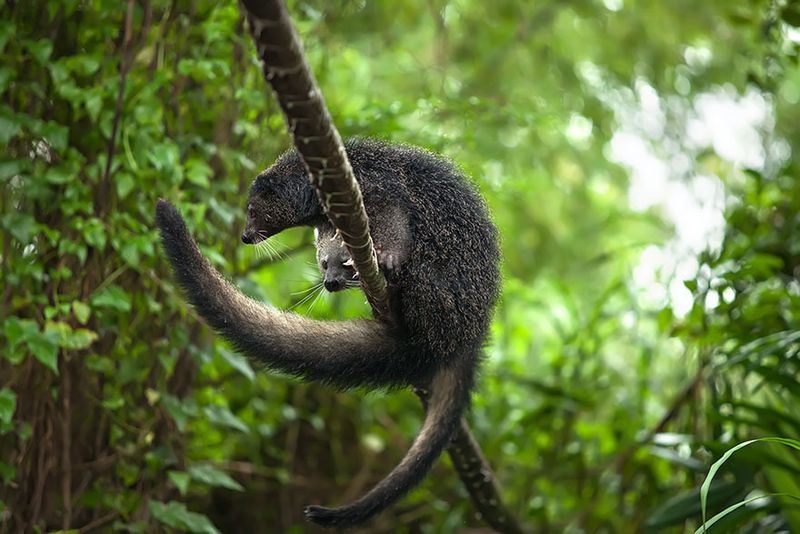
The binturong’s tail is a marvel of nature. Unlike most mammals, it possesses a fully prehensile tail, capable of gripping and holding objects. This adaptation provides an advantage in their arboreal lifestyle.
The tail acts as a secure anchor, allowing the binturong to navigate the forest canopy with confidence. By utilizing its tail, the binturong can hang from branches or stabilize itself while searching for food.
This unique feature underscores its evolutionary ingenuity and highlights its specialization for life in the trees.
Role in Ecosystem
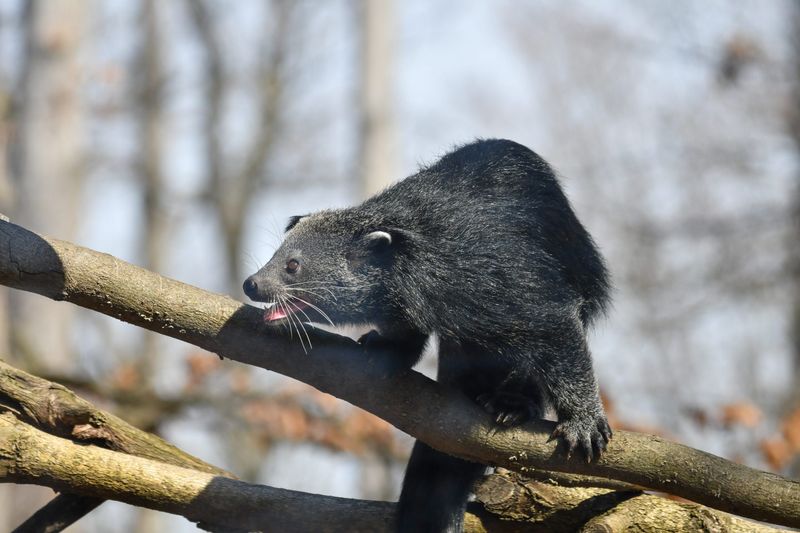
The binturong plays a significant role in its ecosystem. As seed dispersers, they contribute to forest regeneration. By consuming fruits and spreading the seeds, binturongs ensure the growth of various plant species.
This ecological contribution is vital for maintaining the health and diversity of their habitats. Furthermore, as omnivores, they help control insect and small animal populations, preventing overpopulation.
The binturong’s presence in the forest is a testament to the intricate web of life, where each species supports another in the delicate balance of nature.
Binturong’s Gentle Nature

Despite its wild origins, the binturong is known for its gentle demeanor. In captivity, they are often described as curious and playful, forming bonds with their caretakers.
This gentle nature makes them fascinating animals to observe and study. While caution is always advised, their interactions with humans in controlled environments demonstrate their adaptability.
The binturong’s behavior offers insights into their social structures and adaptability, contributing to our understanding of their needs and challenges in the wild.
Cultural Significance

In Southeast Asia, the binturong holds cultural significance. Often featured in folklore and traditional stories, it is perceived as a symbol of mystery and intelligence.
Its unique characteristics have inspired myths and legends, making it an integral part of cultural heritage. These stories highlight the binturong’s connection to the people and their environment.
Recognizing this cultural significance helps foster respect and conservation efforts. By understanding the cultural narratives, conservationists can engage local communities, promoting a shared goal of protecting this remarkable species.

